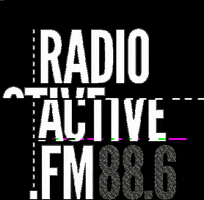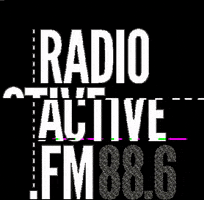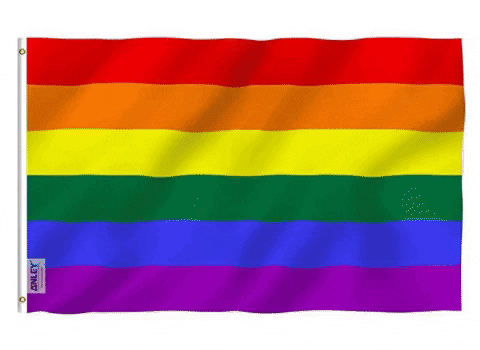
Nuclear Testing Chronology: 1940's


From: Nuclear Testing in the Marshall Islands: A Brief History by Giff Johnson, Majuro: Micronitor News and Printing Company, August 1996. Micronitor News publishes the Marshall Islands Journal. Go here to subscribe: http://marshallislandsjournal.com/Journal_WP/
And go here for Giff's wonderful book about Darlene Keju-Johnson: Don't Ever Whisper: Pacific Health Pioneer, Champaion for Nuclear Survivors: http://marshallislandsjournal.com/Journal_WP/ And also go here for Giff's newest book about Pacific Issues: Idyllic No More: Pacific Island Climate, Corruption & Development Dilemmas: http://marshallislandsjournal.com/Journal_WP/
[Note: Giff Johnson is a national treasure in the RMI]
1944
February - Toward the end of the war, in a gruesome and terrifying bloody battle, the American forces captured Kwajalein Atoll and thereby effectively crushed the Japanese hold on the Marshall Islands. The five Japanese men left on Bikini, while hiding in a covered foxhole, killed themselves with a grenade before the American military forces could capture them.
1945
December - President Harry S. Truman issued a directive to Army and Navy officials that joint testing of nuclear weapons would be necessary "to determine the effect of atomic bombs on American warships." Bikini, because of its location away from regular air and sea routes, was chosen to be the new nuclear proving ground for the United States government.

Iroij [Chief] Juda [L] - aka "King Juda" in Life Magazine's coverage of "Operation Crossroads" in 1946 - being told that his people needed to abandon Bikini within three weeks for a "temporary" re-location.

Bikini village life as recorded by noted Life Magazine's Carl Mydens during the evacuation in preparation for the upcoming series of A-bomb tests known as "Operation Crossroads" with 42,000 U.S. servicemen as witnesses.


The people of Bikini Atoll abandoning their home in early 1946 for a "temporary" re-location.
Estimates from C-14 dating on Utrok suggest the arrival of the indigenous Marshallese around 2,000 years ago, and today many Bikinians are moving to the Big Island of Hawaii and mainland U.S.
Go here for more information: https://www.history.navy.mil/our-collections/art/exhibits/conflicts-and-operations/operation-crossroads-bikini-atoll.html
For more info go here also: https://nuclearweaponarchive.org/Usa/Tests/Crossrd.html
And here: https://www.newyorker.com/tech/annals-of-technology/america-at-the-atomic-crossroads And go here for Jack Niedenthal's excellent "Short History of the People of Bikini Atoll": http://marshall.csu.edu.au/Marshalls/html/History_Varia/Bikini_History/Bikini_History.html And don't forget Jack's poignant article in the Bulletin of the Atomic Scientists [BAS]: https://thebulletin.org/2009/03/the-worlds-debt-to-bikini-2/
1946
February - Commodore Ben H. Wyatt, the military governor of the Marshalls, traveled to Bikini. On a Sunday after church, he assembled the Bikinians to ask if they would be willing to leave their atoll temporarily so that the United States could begin testing atomic bombs for "the good of mankind and to end all world wars." King Juda, then the leader of the Bikinian people, stood up after much confused and sorrowful deliberation among his people, and announced, "We will go believing that everything is in the hands of God."
March - The U.S. Navy evacuates 167 Bikini Islanders to Rongerik Atoll, 125 miles to the east, to make way for the first post World War II nuclear weapons tests."Baker," the second A-bomb test of "Operation Crossroads" at Bikini Atoll in July 1946 was intended to test the viability of using nuclear weapons against a potental adversary [aka the former USSR] during the Cold War. Likewise, the A-bomb tests at the Nevada Test Site [1951-63] with soldiers ["atomic veterans"] in trenches attacking ground-zero simulating a potential NATO use of N-weapons at the Fulda Gap in Germany to push back a potential USSR tank invasion of the former Western Germany during the Cold War.
While the 167 Bikinians were getting ready for their exodus, preparations for the U.S. nuclear testing program advanced rapidly. Some 242 naval ships, 156 aircraft, 25,000 radiation recording devices and the Navy's 5,400 experimental rats, goats and pigs soon began to arrive for the tests. Over 42,000 U.S. military and civilian personnel were involved in the testing program at Bikini.
April - The islands of Rongerik Atoll were (previously) uninhabited because, traditionally, the Marshallese people considered them to be unlivable due to their size (Rongerik is 1/6 the size of Bikini Atoll) and because they had an inadequate water and food supply. There was also a deep-rooted traditional belief that the atoll was inhabited by evil spirits. The Administration left the Bikinians food stores sufficient only for several weeks. The islanders soon discovered that the coconut trees and other local food crops produced very few fruits when compared to the yield of the trees on Bikini. As the food supply on Rongerik quickly ran out, the Bikinians began to suffer from starvation and fish poisoning due to the lack of edible fish in the lagoon. Within two months after their arrival they began to beg U.S. officials to move them back to Bikini.
July- the Bikinian leader, Juda, traveled with a U.S. government delegation back to Bikini to view the results of the second atom bomb test of Operation Crossroads, code named Baker. Juda returned to Rongerik and told his people that the island was still intact, that the trees were still there, that Bikini looked the same. The two atomic bomb blasts of Operation Crossroads were both about the size of the nuclear bomb dropped on Nagasaki, Japan. Eighteen tons of cinematography equipment and more than half of the world's supply of motion picture film were on hand to record the Able and Baker detonations, and also the movement of the Bikinians from their atoll.

Test "Baker," the second A-bomb test of "Operation Crossroads" for use against an adversary's navy [aka the former Soviet Union] in July 1946 at Bikini Atoll. "Baker" was designed as the first underwater test of an atomic bomb in the event of a future naval war at sea. 42,000 future Atomic Veterans [of the 250,000 total] witnessed "Operation Crossroads." Go here for more information: https://www.atomicheritage.org/history/operation-crossroads And here: http://www.nationalacademies.org/hmd/Reports/1996/Mortality-of-Veteran-Participants-in-the-CROSSROADS-Nuclear-Test.aspx And here: https://www.revealnews.org/article/us-veterans-in-secretive-nuclear-tests-still-fighting-for-recognition/
These four videos tell the story of "Operation Crossroads," the first post-
WW2 series of A-bomb tests at Bikini Atoll in the summer of 1946.
1947
January - From December of 1946 through January of 1947, the food shortages worsened on Rongerik; the small population of Bikinians was confronted with near starvation. During the same period of time, the area of Micronesia was designated as a United Nations Strategic Trust Territory (TT) to be administered by the United States. Indeed, it was the only strategic trust ever created by the United Nations. In this agreement, the U.S. committed itself to the United Nations directive to "promote the economic advancement and self-sufficiency of the inhabitants, and to this end shall...protect the inhabitants against the loss of their lands and resources..." The people of Bikini have long seen the irony in the conduct of the TT agreement that allowed the bombing of their homeland and that forced them into starvation on Rongerik Atoll.
May - To make the Bikinians situation on Rongerik even more serious, a huge fire broke out, damaging many of the coconut trees. By July, when a medical officer from the U.S. visited the island, the Bikinian people were found to be suffering severely from malnutrition. A team of U.S. investigators determined in the fall, after a visit to Rongerik, that the island had inadequate supplies of food and water and that the Bikini people should be moved from Rongerik without delay. The U.S. Navy was harshly criticized in the world press for neglecting the Bikini people on Rongerik. Harold Ickes, a reporter, stated in his 1947 syndicated column "Man to Man" that, "The natives are actually and literally starving to death."
July - The Marshall Islands and the rest of Micronesia became a United Nations strategic Trust Territory administered by the United States. Among other obligations, the U.S. undertakes to "protect the inhabitants against the loss of their lands and resources." December Enewetak Atoll is selected for the second series of U.S. nuclear tests, and the Enewetak people are quickly moved to Ujelang Atoll. In 1947, the Marshall Islands becomes a United Nations strategic Trust Territory administered by the United States. Among other obligations, the U.S. undertakes to "protect the inhabitants against the loss of their lands and resources". Immediate preparations began for the transfer of the Bikinians to Ujelang Atoll in the western Marshalls.
November- a handful of young Bikinian men traveled to Ujelang, and with the help of Navy Seabees, they began to arrange a community area and to construct housing. At the end of the year, however, the U.S. selected Enewetak Atoll as a second nuclear weapons test site. The Navy then decided that it would be easier to move the Enewetak people to Ujelang despite the fact that the Bikinians had built all the housing and held high hopes that they would be relocated there.
1948
January - University of Hawaii anthropologist, Dr. Leonard Mason, traveled to Rongerik at the request of the Trust Territory High Commissioner to report on the status of the Bikinians living there. Horrified at the sight of the withering islanders, Mason immediately requested a medical officer along with food supplies to be flown in to Rongerik.
March - On the verge of starvation, the Bikinians are taken off Rongerik Atoll and moved to Kwajalein, where they stay for six months while a new home is found for them. April Operation Sandstone begins at Enewetak and includes three atomic tests. The Bikini community moves to southern Kill, a single island with no protected lagoon or anchorage. The Bikinians fell into yet another debate among themselves about alternative locations soon after they settled on Kwajalein.
June - the Bikinians chose Kili Island in the southern Marshalls because the island was not ruled by a paramount king, or iroij, and was uninhabited. This choice ultimately doomed their traditional diet and lifestyle, which were both based on lagoon fishing.
September - two dozen Bikinian men were chosen from among themselves to accompany 8 Seabees to Kili to begin the clearing of land and the construction of a housing area for the rest of the people who remained on Kwajalein.
November - after six months on Kwajalein Atoll, the 184 Bikinians set sail once again. This time the destination was Kili Island, their third community relocation in two years. Starvation also troubled the Bikinians on Kili; this situation led the Trust Territory administration to donate a 40-foot ship to be used for copra transportation between Kili and Jaluit Atoll.





